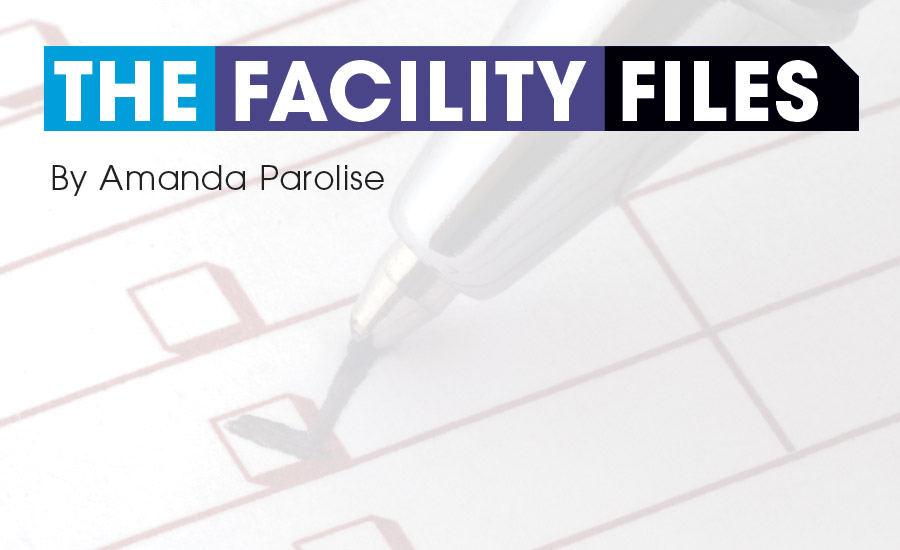This month’s Facility File will focus on the B2B December test for the energy retrofit of a commercial office building hot water heating system conversion from a utility company steam system to a new, high-efficiency condensing boiler system. This energy retrofit project system will receive an energy retrofit performance contract to redesign, build, and take over operation and maintenance of the heating system based on a performance contract lease agreement to span the agreed upon boiler’s useful life cycle of 20 years. The scope of this building program is to remove the existing underground high-pressure steam supply and condensate return system from a local utility company piped distribution system from below the city street into the building.
For this Facility File, the project delivery method is based on the building owner agreeing to this design-build-operate-maintain performance contractor (PC) and his or her energy retrofit performance contract. This PC team shall include its own in-house commissioning and testing, adjusting, and balancing engineers (CxTAB). The PC firm shall subcontract out the energy and retrofit design professionals, subcontract the HVAC contractor, and place the boiler room O&M operators on-site along with the remote energy monitoring/management and planned maintenance work order system.
It will be very beneficial for the PC and owner’s O&M personnel to refresh their memory by reading chapter 3 (Commercial and Public Buildings) in the 2015 ASHRAE Handbook — HVAC Application to be knowledgeable of ASHRAE’s latest guidelines. In addition, and based on the performance contract, the PC-owner O&M team is directed to chapter 58 (Integrated Building Design) and 61 (Smart Building Systems) of the 2015 Handbook as well as the 2016 ASHRAE Handbook — HVAC Systems and Equipment chapter 32 (Boilers). The PP O&M personnel shall also read chapters 36-43 of the 2015 Handbook to familiarize themselves with building operation and management.
In the design phase of the project, the PC-owner’s O&M team will want to contribute information to the design team’s writing of the contract specification and, more specifically, the following activities: service contracts, parts inventory, and as-built drawings requirements. Reviewing the design documents, this O&M team will want to be assured that equipment serviceability is adequate and safe (e.g., boiler room ventilation and gas code ventilation).
For this energy retrofit performance contract program, as well as a business plan to continue to successfully manage the building central hot water heating system, the PC’s energy engineer shall calculate an O&M budget in addition to the program’s construction budget. The equipment life of a boiler is approximately 20 years, but it can last much longer if proactively maintained over the life of this heating plant.
In the construction phase, the O&M team will want to revisit the issues noted earlier during the design phase. Next comes the startup, testing, adjusting, balancing, and commissioning phases, where the O&M team will want to be proactive in following along with the PC’s mechanical-electrical coordinator and the subcontractor’s startup personnel and receive equipment training from the boiler manufacturer’s startup technician and system training using the O&M manuals and contract drawings (that will eventually become the as-built drawings).
Once this system has receive a rebalancing of the hot water heating system, including the cleaning out of all water strainers before the balancing, the HVAC contractor and the third-party consultant will begin the FPT system demonstration to the IPD team. During this system demonstration, the O&M staff will assist in making necessary adjustments to the controls and the building automation program based on out-of-sync controls and control system modifications based on historical data and lessons learned. All of this will be documented in the CxTAB final recommissioning report and become part of the quality control annual training that will also include review of O&M manuals and record drawings.
[X] Outdoor air dry bulb and wet bulb temperature [X] Primary heating water supply and return temperature [X] Space temperature dry bulb and wet bulb [X] Alarms and safeties [X] Boiler control points
Taking the same approach as the PC’s design engineering, the PC’s O&M personnel shall use a series of computer-generated touchscreen project checklists that allows her staff to confirm that the following facility files have been collected. This process shall begin at the beginning of and at the start of construction and not at project closeout so that the facility files can be inputted into the PC’s off-site CMMS system. Touchscreen O&M checklists should include:
[X] Equipment shop drawings [X] O&M manuals, parts list, and lubricants [X] Troubleshooting tips [X] Seasonal change-over procedures [X] Startup and shutdown instructions
The PC’s O&M personnel shall review the contractor-produced piping and field fabrication/field coordination drawings prior to fabrication. Touchscreen service checklists shall include:
[X] Location of shutoff valves, ATC valves, and balancing valves [X] Strainers [X] Equipment and control devices [X] Access for servicing equipment
The training process shall include specific heating system and equipment training but also emergency plan training to simulate boiler failure. The water balancing of the system (new and existing equipment), along with the final TAB report, shall be included in the preventive maintenance work order system to routinely assure continuous system performance. In addition, the hydraulic modeling of the entire system shall be updated after the final TAB report. This will require the TAB engineer to provide the water balancing reports along with the associated system flow diagrams noting quantities and pressures for rebalancing if necessary as part of the project closeout documents. Touchscreen training checklists shall include:
[X] Equipment [X] System [X] Emergency plan [X] Automatic controls [X] Energy management





